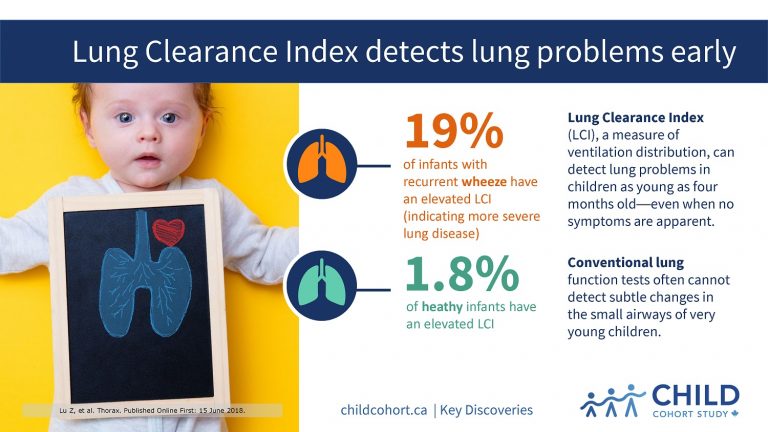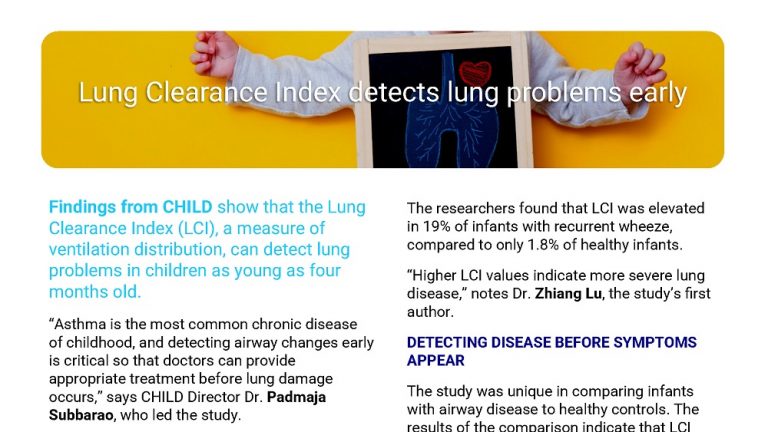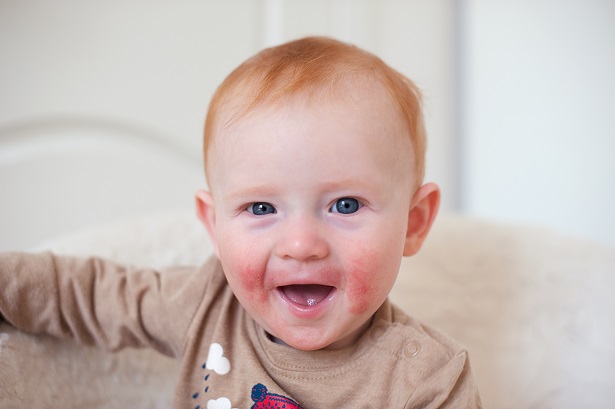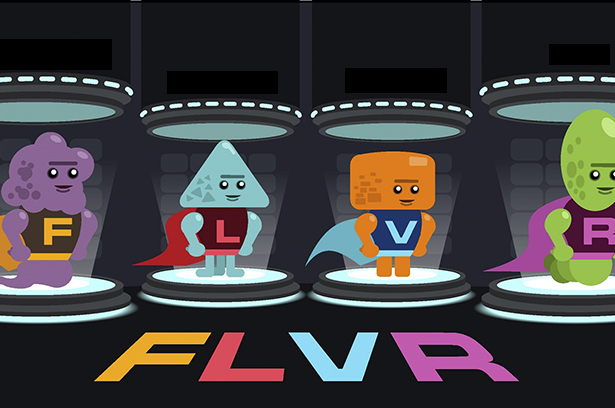Lung Clearance Index detects lung problems early
Findings from CHILD show that the Lung Clearance Index (LCI), a measure of ventilation distribution, can detect lung problems in children as young as four months old.
“Asthma is the most common chronic disease of childhood, and detecting airway changes early is critical so that doctors can provide appropriate treatment before lung damage occurs,” says CHILD Study Director Dr. Padmaja Subbarao, who led the study.
Conventional lung function tests used to diagnose asthma and other childhood breathing problems may not detect subtle tell-tale changes in the small airways of very young children. CHILD researchers have now found that the LCI can detect lung problems in children at a very young age.
The research, published in the June 2018 issue of Thorax, examined 37 infants with a history of wheezing referred from a hospital outpatient clinic and 113 healthy infants participating in the CHILD Study.
LCI was measured using a technique called the Multiple Breath Washout (MBW)—the infants inhaled a “tracer” gas through a face mask while sleeping, and the researchers tracked the time it took for them to clear the gas from their lungs.
The researchers found that LCI was elevated in 19% of infants with recurrent wheeze, compared to only 1.8% of healthy infants.
“Higher LCI values indicate more severe lung disease,” notes Dr. Zhiang Lu, the study’s first author.
DETECTING DISEASE BEFORE SYMPTOMS APPEAR
The study was unique in comparing infants with airway disease to healthy controls. The results of the comparison indicate that LCI may be effective in detecting early lung disease even when no symptoms are apparent.
“This suggests that the test could be useful at routine clinic visits when the child is well,” adds Dr. Lu.
“We are incredibly fortunate to have the CHILD Study right here in Canada to help us understand how chronic diseases, including asthma and other respiratory diseases, begin in early life,” adds Dr. Subbarao.
In a subsequent study, Dr. Subbarao and colleagues also found the LCI to be a valuable tool to monitor preschoolers with severe wheezing.





